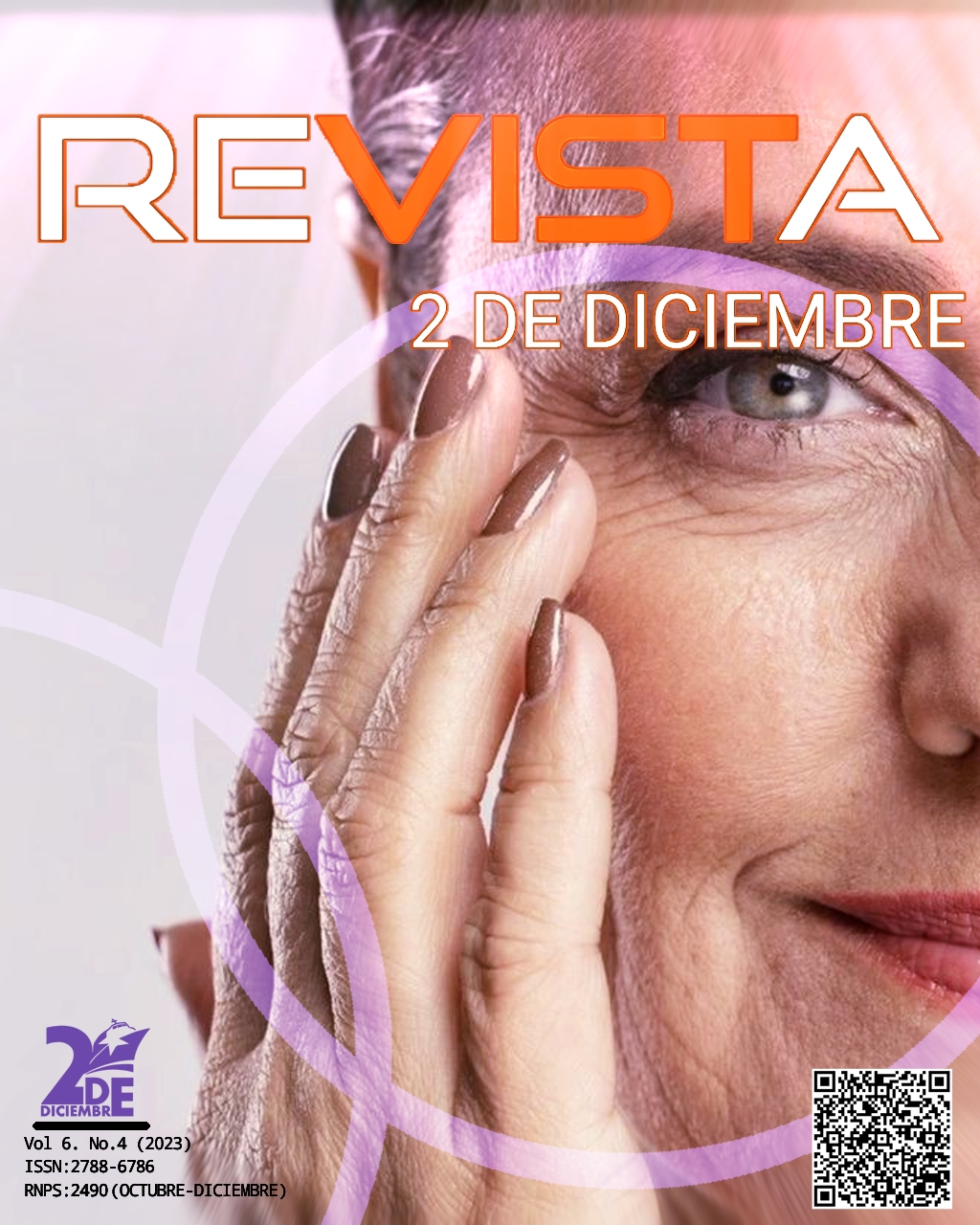Morphofunctional characteristics of the stomatognathic system in Angolan patients with malocclusion
Keywords:
Temporomandibular joint, Dental occlusion, Malocclusion.Abstract
Introduction: the morphofunctional characteristics of the stomatognathic system vary between populations and ethnic groups, so its determination is important for orthodontic treatment. Objective: to determine the morphofunctional characteristics of the stomatognathic system in Angolan patients with malocclusion. Methods: an observational, descriptive, cross-sectional study was carried out in 45 patients with malocclusion treated at the Orthodontics Clinic of the Meditex Clinic, in Luanda, Angola, from March 2022 to January 2023. Facial characteristics, occlusion ratio, craniomandibular skeletal relationship, and the degree of temporomandibular joint dysfunction were evaluated. Descriptive statistical measures were used to summarize the information, which were number and percentage. Results: 46.66 % of patients were characterized by a convex profile and lower third dolichofacial type (71.11 %), 82.22 % of patients did not have horizontal asymmetries; 44.44 % of patients showed greater than normal protrusion; Most patients showed a maxillomandibular skeletal class II (ANB: 4.408), with a posterior position of the chin in a sagittal direction (facial depth: 84.964) and a posterior position of the glenoid cavity (cranial deflection: 26.498) and ramus. mandibular (74,553); Mild temporomandibular dysfunction occurred in 64.44% of patients. Conclusions: Angolan patients with malocclusion were mainly characterized by increased overjet due to maxillomandibular skeletal class II posterior mandibular position and mild temporomandibular dysfunction.
Downloads
References
1. Ardani IGAW, Sanjaya ML, Sjamsudin J. Cephalometric Characteristic of Skeletal Class II Malocclusion in Javanese Population at UniversitasAirlangga Dental Hospital. ContempClin Dent [Internet]. 2018 [citado 14/03/2023]; 9 (Suppl 2): S342-S346. Disponible en:https://www.ncbi.nlm.nih.gov/pmc/articles/PMC6169297/
2. Jiménez Yong Y, Machado Contreras M, Véliz Concepción OL, Barreto Fiu EE, Jiménez Mesa LM. Enfoque integral en el diagnóstico del patrón esquelético maxilomandibular, la postura corporal y cráneo-cervical. Rev Cubana Estomatol [Internet]. 2022 [citado 14/03/2023]; 59 (1): e3545. Disponible en: http://scielo.sld.cu/scielo.php?script=sci_arttext&pid=S0034-75072022000100007&lng=en.
3. Olbrisch C, Santander P, Moser N, Klenke D, Meyer-Marcotty P, Quast A. Three-dimensional mandibular characteristics in skeletal malocclusion: A cross-sectional study. J OrofacOrthop [Internet]. 2022 [citado 14/03/2023]. Disponible en: https://link.springer.com/article/10.1007/s00056-022-00419-1
4. Al Ayoubi A, Dalla Torre D, Madléna M. Craniofacial characteristics of Syrian adolescents with Class II division 1 malocclusion: a retrospective study. PeerJ[Internet]. 2020 [citado 14/03/2023]; 8: e9545. Disponible en: https://www.ncbi.nlm.nih.gov/pmc/articles/PMC7368432/
5. Gupta P, Singh N, Tripathi T, Gopal R, Rai P. Tau Angle: A New Approach for Assessment of True Sagittal Maxillomandibular Relationship. Int J ClinPediatrDent[Internet]. 2020 [citado 14/03/2023]; 13 (5): 497-500. Disponible en: https://www.ncbi.nlm.nih.gov/pmc/articles/PMC7887183/
6. Gregoret J, Tuber E, Escobar LH, Matos da Fonseca A. Ortodoncia y cirugía ortognática, diagnóstico y planificación. España: Barcelona: ESPAXS, SA; 1997.
7. Maglione H. Frecuencia y relación de los síntomas en el proceso de disfunción del sistema estomatognático. RevAsocOdont Argentina. 1982; 70 (6):327-33.
8. Toledo Mayari G. Evaluación de distintosmétodos para determinar el potencial decrecimiento en pacientes de Ortodoncia.Propuesta de método simplificado [tesis]. LaHabana: Universidad Ciencias Médicas de LaHabana; 2008 [citado 14/03/2023]. Disponibleen:http://tesis.repo.sld.cu/240/1/Toledo_Mayari.pdf
9. Sivakumar A, Nalabothu P, Thanh HN, Antonarakis GS. A Comparison of Craniofacial Characteristics between Two Different Adult Populations with Class II Malocclusion-A Cross-Sectional Retrospective Study. Biology (Basel) [Internet]. 2021 [citado 14/03/2023]; 10 (5): 438. Disponible en:https://www.ncbi.nlm.nih.gov/pmc/articles/PMC8156312/
10. Al Ayoubi A, KhandanDezfully A, Madléna M. Dentoskeletal and tooth-size differences between Syrian and Hungarian adolescents with Class II division 1 malocclusion: a retrospective study. BMC Res Notes [Internet]. 2020 [citado 14/03/2023]; 13 (1): 270. Disponible en: https://www.ncbi.nlm.nih.gov/pmc/articles/PMC7268623/
11. García Menéndez M, Perdomo Gutiérrez L. Discrepancia negativa transversal del maxilar y factores asociados en pacientes con necesidad de cirugía ortognática. Rev Cubana Estomatol [Internet]. 2022 [citado 14/03/2023]; 59 (2): e3911 Disponible en: https://revestomatologia.sld.cu/index.php/est/article/view/3911
12. Thiesen G, Freitas MPM, Gribel BF, Kim KB. Comparison of maxillomandibular asymmetries in adult patients presenting different sagittal jaw relationships. Dental Press J Orthod [Internet]. 2019 [citado 14/03/2023]; 24 (4): 54-62. Disponible: https://www.ncbi.nlm.nih.gov/pmc/articles/PMC6733234/
13. McGrath K, Eriksen AB, García-Martínez D, Galbany J, Gómez-Robles A, Massey JS, et al. Facial asymmetry tracks genetic diversity among Gorilla subspecies. ProcBiolSci[Internet]. 2022 [citado 14/03/2023]; 289 (1969): 20212564. Disponible en: https://www.ncbi.nlm.nih.gov/pmc/articles/PMC8864355/
14. Macrì M, Murmura G, Scarano A, Festa F. Prevalence of temporomandibular disorders and its association with malocclusion in children: A transversal study. Front Public Health [Internet]. 2022 [citado 14/03/2023]; 10: 860833. Disponible en: https://www.ncbi.nlm.nih.gov/pmc/articles/PMC9500209/
15. Wu J, Bek JSY, Luo M, Xu H, Wang Y, Han X. Three-dimensional quantitative analysis of dental and skeletal characteristics of skeletal Class I unilateral posterior crossbite in adults. BMC Oral Health[Internet]. 2022 [citado 14/03/2023]; 22 (1): 595. Disponible en: https://www.ncbi.nlm.nih.gov/pmc/articles/PMC9741781/
16. Tsuji K, Haruyama N, Nomura S, Murata N, Yoshizaki K, Mitsuyasu T, et al. Characteristics of craniofacial morphology and factors affecting them in patients with isolated cleft palate. Peer J [Internet]. 2021 [citado 14/03/2023] Disponible en: https://www.ncbi.nlm.nih.gov/pmc/articles/PMC8063870/
17. Tageldin MA, Yacout YM, Marzouk ES. Skeletal and dentoalveolar characteristics of maxillary lateral incisor agenesis patients: a comparative cross-sectional study. BMC Oral Health[Internet]. 2022 [citado 14/03/2023]; 22 (1): 608. Disponible en: https://www.ncbi.nlm.nih.gov/pmc/articles/PMC9753366/
18. Zawawi KH, Alsulaimani FF, Al-Dharrab AA, Afify AR, Al-Zahrani MS, Baeshen HA. Morphological features of Class I, II and III malocclusions of Saudi adolescents. Saudi J BiolSci[Internet]. 2021 [citado 14/03/2023]; 28 (6): 3534-3539. Disponible en: https://www.ncbi.nlm.nih.gov/pmc/articles/PMC8176058/
19. Yap AU, Chen C, Wong HC, Yow M, Tan E. Temporomandibular disorders in prospective orthodontic patients. AngleOrthod[Internet]. 2021 [citado14/03/2023]; 91 (3): 377-383. Disponible en: https://www.ncbi.nlm.nih.gov/pmc/articles/PMC8084469/
20. Fernández Correa L, González Olazábal MV, Rodríguez Pimienta EM, Reytor Saavedra EJ, Medinilla Izquierdo G. Clave I de la oclusión según los criterios de Andrews y los trastornos temporomandibulares. Inf. rev. ciente [Internet]. 2021 [citado 14/03/2023]; 100 (2): e3350. Disponible en: http://scielo.sld.cu/scielo.php?script=sci_arttext&pid=S1028-99332021000200003&lng=en.
21. Almășan O, Kui A, Duncea I, Manea A, Buduru S. Temporomandibular Joint Disk Displacements in Class II Malocclusion and Cervical Spine Alterations: Systematic Review and Report of a Hypodivergent Case with MRI Bone and Soft Tissue Changes. Life (Basel) [Internet]. 2022 [citado 14/03/2023]; 12 (6): 908. Disponible en: https://www.ncbi.nlm.nih.gov/pmc/articles/PMC9229202/
Downloads
Published
How to Cite
Issue
Section
License
Authors who have publications with this journal agree to the following terms: authors retain their copyright and grant the journal the right of first publication of their work, which is simultaneously subject to the Creative Commons Attribution-NonCommercial 4.0 International License that allows third parties to share the work as long as the author and first publication in this journal are indicated, for non-commercial use. Authors may adopt other non-exclusive license agreements for distribution of the published version of the work (e.g., depositing it in an institutional telematic archive or publishing it in a monographic volume) as long as the initial publication in this journal is indicated. Authors are allowed and encouraged to disseminate their work via the Internet (e.g., in institutional telematic archives, in their web page or in Pre-print servers) before and during the submission process, which can lead to interesting exchanges and increase citations of the published work. (See The Open Access Effect).







